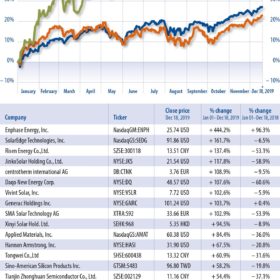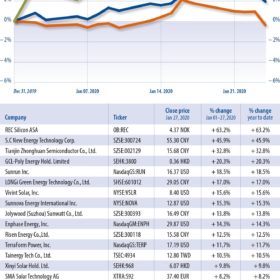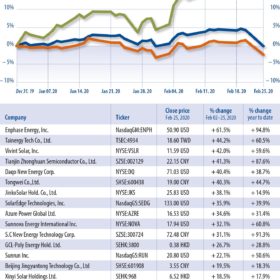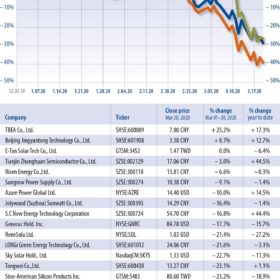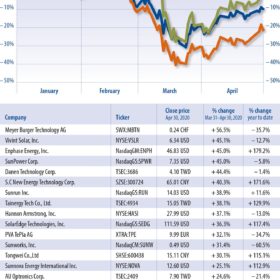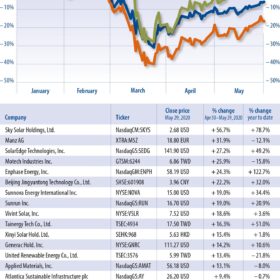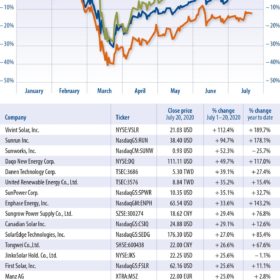Decision time for utilities
Enabler or inhibitor, promoter or prohibitor – there is no doubt that utilities are the pre-eminent actor in the electricity sector. However, whether they have driven the adoption of PV remains unclear at best.
Bruised, battered, but better
It could not have been expected, but 2020 has been a year quite unlike any other in recent history. And as we round it out with constraints still impacting many aspects of our lives, there are a considerable number of reasons to end the year feeling optimistic. First, to start the way most conversations this […]
New markets, renewed strength
It has been an exciting year for solar stocks. The Guggenheim Solar ETF (TAN) increased by 64% versus the S&P 500 and Dow, which gained 27% and 21%, respectively. The top-performing sectors were the inverter and module/cell segments, which grew by 168% and 78%, respectively.
And they’re off
Solar stocks got off to a great start in 2020. In January, the Guggenheim Solar ETF (TAN) increased 4.1% vs. the S&P 500 and Dow, which increased 0.5% and 0.1%, respectively.
‘Sector rotation has begun’
Solar stocks significantly outperformed the broader market in February.
Covid-19 and oil supply shock
In the last edition, we were concerned about the looming outbreak of Covid-19, but we never imagined it would decapitate global economies, while the Saudis devastated the U.S. fossil fuels industry.
Looking past the pandemic
With markets buoyed by investor expectations for a restart to the global economy in the coming months, it could be time again to look to the future, writes Jesse Pichel of ROTH Capital Partners.
Ahead of the curve
Buoyed by expectations of strong performance in the U.S. residential market, solar stocks outperformed the broader market in May, writes Jesse Pichel of ROTH Capital Partners.
V for recovery
Solar stocks outperformed the broader market in June. High demand for polysilicon amid the expansion of wafer production – as well as expectations for an economic recovery in the second half – drove solar stocks upward, writes Jesse Pichel of ROTH Capital Partners.
Signs of a strong second half
Solar stocks enjoyed another good month in July, writes ROTH Capital Partners Jesse Pichel. A major acquisition deal is driving investor confidence in the United States, new wafer capacity is coming online, and the temporary loss of some polysilicon manufacturing capacity is pushing prices up slightly.


